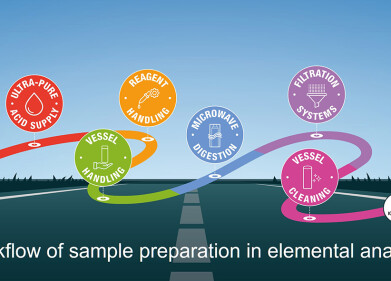Environmental Laboratory
How Fast Is Permafrost Thawing?
May 10 2017
New research conducted by a team of scientists from the UK, Norway and Sweden have warned that the permafrost covering much of the northern hemisphere could be melting at a far faster rate than previously thought.
Working in tandem with the Met Office, the team used a mixture of on-the-ground observations and computational climate change models to predict how much permafrost will be lost if the nations of the world keep to the proposed limit of 2°C… and what this could mean going forwards.
What is permafrost and why does it matter?
Permafrost is defined as soil which has remained below freezing point (0°C) for more than two years. At present, there is roughly one quarter of the Earth’s land surface which qualifies as permafrost, occurring in high-altitude regions (such as mountain peaks and glaciers) and high-latitude areas (such as Siberia, Alaska and much of Canada).
The thickness of this frozen soil can vary from just a few metres to many hundreds of metres, depending on the geographical location. It is important in the short term because thawing of the permafrost could have repercussions for the structural integrity of nearby buildings, roads and other infrastructure points.
However, far more concerning are the long term effects of permafrost thaw. Beneath this frozen soil lie countless specimens of dead flora and fauna, which once uncovered would begin to decompose and release greenhouse gases (GHGs) into the atmosphere. Recently, it was discovered that melting permafrost can unleash all three kinds of GHGs into the air – that’s nitrous oxide, as well as methane and carbon dioxide.
A vicious cycle
It is believed that there are more greenhouse gases trapped beneath the permafrost than are present in our atmosphere currently. Clearly, keeping those gases in the soil is a major priority.
However, the new study (published in the journal Nature Climate Change) show that trees, shrubbery and other vegetation have increased by 26% since the 1960s in some parts of the tundra. As the vegetation spreads out, it absorbs more of the sun’s rays than the permafrost would, thereby reducing temperatures and fuelling further thawing… which leads to more GHG emissions and increased temperatures.
As such, the melting of the permafrost could soon take on a snowball effect (excuse the irony of the pun), with more of the soil thawing than was previously anticipated.
More stringent targets needed
In fact, the scientists working on this particular project believe that for every degree the world temperature rises, we lose 1.5 million square miles of permafrost. That equates to a patch of land greater than India in size.
With that in mind, the research team warn that 40% of existing permafrost could be lost even if we do manage to limit global warming to 2°C. Instead, they propose stabilising the temperature below a 1.5°C hike, thus saving almost a million square miles of permafrost and countless tonnes of GHGs… and that’s not even counting the financial repercussions involved.
Therefore, it’s imperative that we devise a plan of action to limit global warming and save as much permafrost as possible, or else risk the potentially catastrophic consequences.
Digital Edition
AET 28.2 April/May 2024
May 2024
Business News - Teledyne Marine expands with the acquisition of Valeport - Signal partners with gas analysis experts in Korea Air Monitoring - Continuous Fine Particulate Emission Monitor...
View all digital editions
Events
Jul 10 2024 Birmingham, UK
Jul 21 2024 Cape Town, South Africa
Australasian Waste & Recycling Expo
Jul 24 2024 Sydney, Australia
Jul 30 2024 Jakarta, Indonesia
China Energy Summit & Exhibition
Jul 31 2024 Beijing, China


















